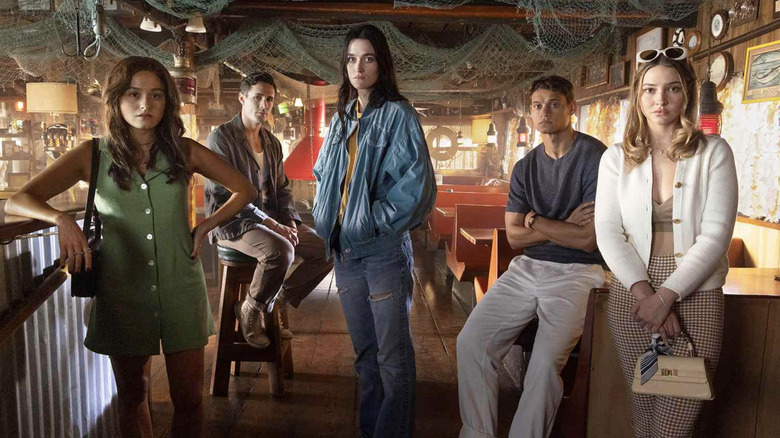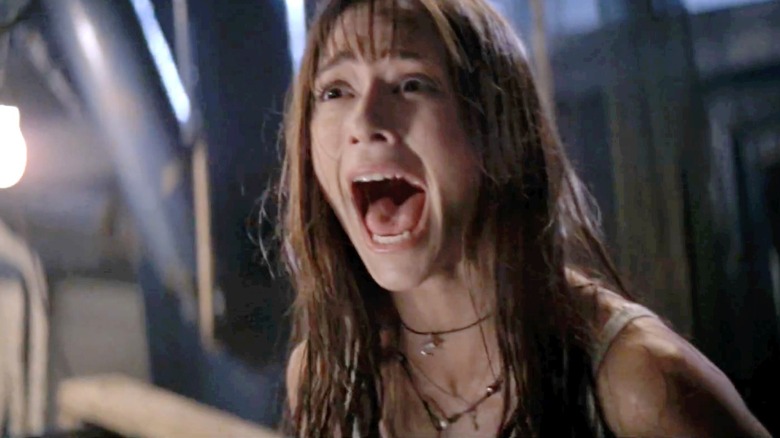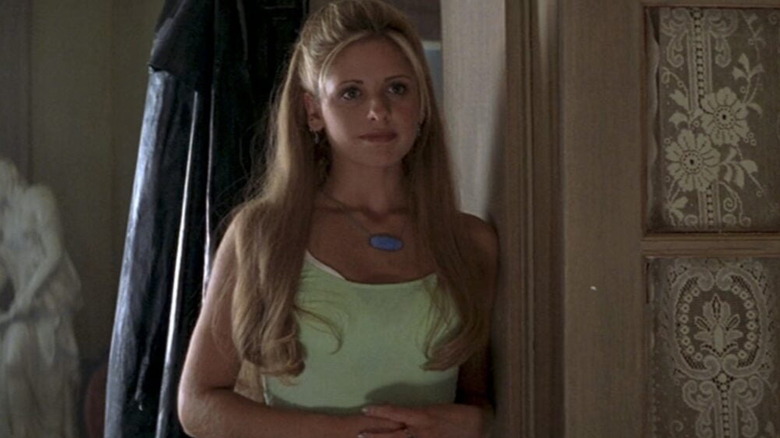I Know What You Did Last Summer's Surprise Cameo Nods To The Series' Most Controversial Element
This article contains major spoilers for "I Know What You Did Last Summer" 2025.
1997's "I Know What You Did Last Summer," along with the series of films (and TV show) that followed it, is generally regarded as a slasher. More specifically, it's a whodunit slasher, the type that carries on the tradition of murder mysteries made famous by Agatha Christie as much as they revel in staging kill scenes. This type of slasher tends to tone down the element of the supernatural as seen in something like John Carpenter's "Halloween," which contains a lot of mysterious goings-on involving its masked killer that can't be easily explained or rationalized. This tone for "IKWYDLS" was established in large part by Lois Duncan's 1973 novel of the same name, but "IKWYDLS" screenwriter Kevin Williamson reworked the murder mystery into a more true-to-form slasher, much to Duncan's chagrin.
Because of this reputation for the series to be grounded in reality, fans of the "IKWYDLS" franchise have generally rejected the second direct-to-video sequel "I'll Always Know What You Did Last Summer," which turns The Fisherman character into a supernatural ghost demon menacing another group of guilty young people. To be fair, that sequel's connection to the first two films is kept vague, as it turns the story of Julie James (Jennifer Love Hewitt) and her friends into a sort of urban legend that now has the power to literally haunt people who commit the crime of manslaughter. Is the supernatural Fisherman (Don Shanks) supposed to be the spirit of Ben Willis (Muse Watson) or his son, Will (Matthew Settle), or just a ghost figure all his own?
With the release of this month's legacy sequel, also titled "I Know What You Did Last Summer," those particular questions are now moot, as director/co-writer Jennifer Kaytin Robinson and co-writer Sam Lansky have brought the action back to Southport, North Carolina, with a Fisherman who is once again flesh and blood. Robinson doesn't jettison all aspects of the supernatural, however. Instead, she embraces them and acknowledges the series' longstanding use of supernatural elements in a big way with the surprise cameo return of the deceased Helen Shivers (Sarah Michelle Gellar) in an unabashedly spooky nightmare scene.
'I Know What You Did Last Summer' has always had a supernatural urban legend vibe
The majority of fans reject the "Friday the 13th Part VI: Jason Lives"-style notion of an undead Fisherman in "I'll Always Know," but it'd be erroneous to claim that "IKWYDLS" contained no elements of the supernatural beforehand. The latent supernatural elements in the series come straight from the core premise of the original story, which is that a group of teens (or young people in general) find themselves accidentally responsible for the death of a stranger, an incident they then decide to cover up and keep a secret for various reasons. When mysterious notes begin to be delivered to the group a year later, claiming that the anonymous sender knows what they did last summer, it's true that the films quickly jump to the characters trying to play detective in sussing out who could know their secret. Yet the notion of the person they accidentally killed somehow getting some karmic revenge for their murder hangs over the characters and the films themselves, lending it all a supernatural edge.
Or, if it's not supernatural per se, then this element at least introduces an urban legend vibe, which the films make further use of. In the first film, Ben Willis can pull off a remarkably complex series of traumatic pranks on Julie, Helen, and others. After all, just how was a blue-collar fisherman able to stuff a car's truck with a corpse and live crabs and then remove them all in a matter of minutes? In "I Still Know..." as well as Robinson's film, the added benefit of there being two Fishermen killers helps account for these near impossibilities, yet there's still a stretched credulity to some of their feats. Sure, this trope may be part of the slasher movie's DNA by this point, but it still counts toward adding to the spooky vibe. In this context, the inclusion of a supernatural killer in "I'll Always Know..." as well as the introduction of a cult in the 2021 series aren't so much grafted on as they are extrapolations of this tone. It's a tone that not only exists in just about every slasher movie, but one that certainly becomes an element in slasher franchises, if for no better reason than it allows for the idea of similar events often reoccurring to have some credibility.
The Helen nightmare keeps 'I Know What You Did Last Summer' eerie
Although "I Know What You Did Last Summer" 2025 is planted firmly in the series' whodunit thriller roots, it contains what is arguably the series' most supernatural scene outside of "I'll Always Know..." The most notable supernatural element in the first two films are actually such for retroactive reasons. Their endings, which provided a "chair jumper" final attack by the potentially not-quite-dead Fisherman against Julie, were played as real initially, only for them to be retconned by their subsequent sequels as nightmarish visions. In Robinson's film, Danica (Madelyn Cline) has a vision during a nightmare, which is explicitly presented as such.
In it, the deceased Helen, a woman Danica has only recently heard of, appears to the young girl as a byproduct of her traumatic guilt over the murder of her fiancé, Wyatt (Joshua Orpin). Of course, bringing back Gellar would be pointless if she didn't get a moment to shine, so Danica doesn't just see Helen hovering over Wyatt's corpse — she has a whole conversation with the woman, who seems supernaturally aware of her being deceased as well as a meta counterpart to Danica herself.
Robinson doesn't shy away from making the nightmare sequence adventurous. Not only does the lighting and staging of the sequence have a more explicit supernatural, ghost story look and feel to it, but by the end of the scene, Helen begins bleeding from her head and transforms before Danica's eyes into a living corpse. This choice may or may not be a knowing homage to the zombie-like Fisherman from "I'll Always Know..." Whether or not it is, the moment leans hard into the series' latent supernatural themes, as it's a scene that could easily be at home in a Gothic horror film or even a "Nightmare on Elm Street" sequel. While it's great for fans of the actress and her character, Robinson ensures that the nightmare sequence isn't merely an excuse to have Gellar and Helen back. Instead, the moment helps "IKWYDLS" retain that additional dimension of eeriness, which allows the movie to feel more well-rounded than being a mere whodunit or hack-and-slash fest.
The entire point of Duncan's source story was the characters being haunted by the traumatic guilt of their actions, and even though the films make that haunting a little more explicit than implicit, the inclusion of that element is still appropriate, intriguing, spooky, and yes — fun.


